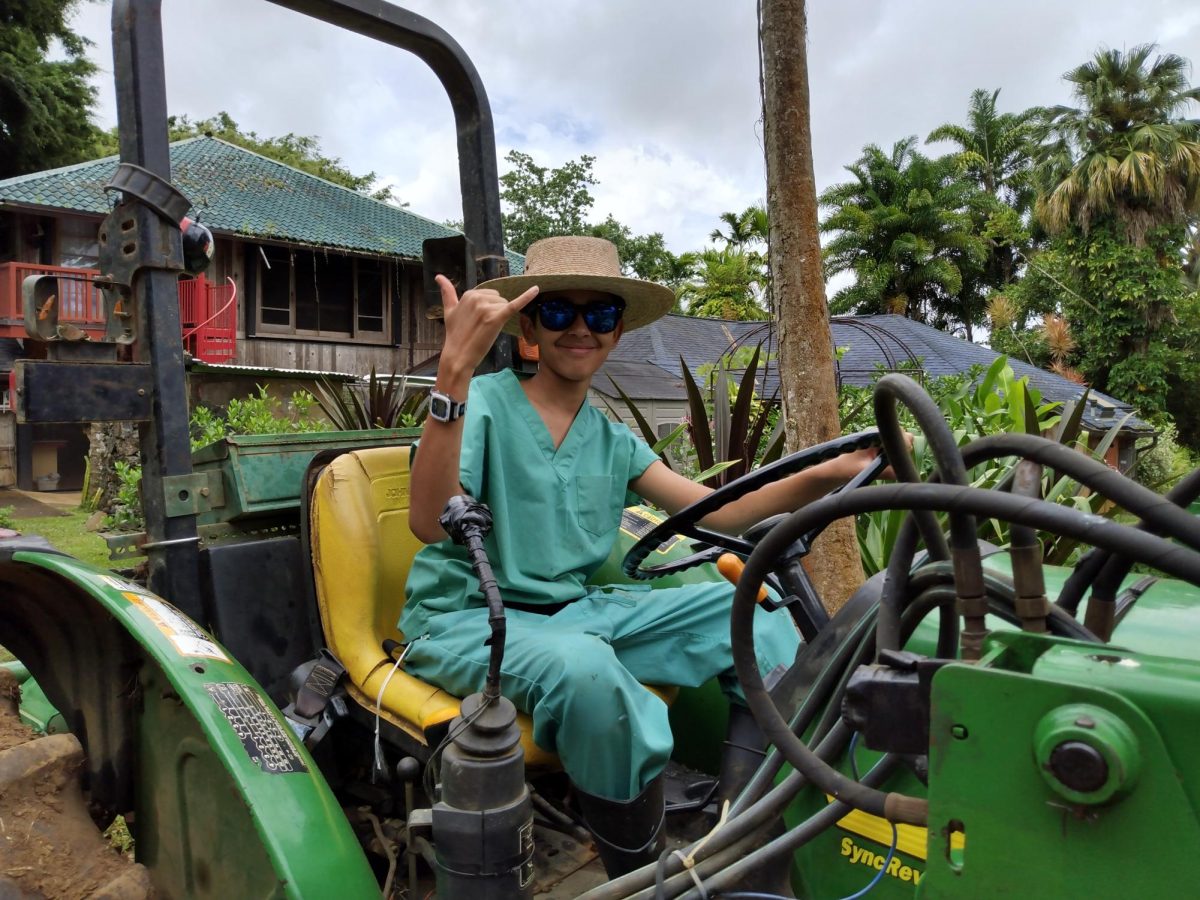Meditating, Junior Balakumar Muttulingam uses a monk’s techniques to calm his mind and relax. He learned to do this at a monastery in Kauai, Hawaii where he volunteers once a year. Whether he goes during winter or summer break, he brings this energy into his everyday school life, bringing him closer to his culture and religion.
“Whenever I go to the monastery, it helps to ground me,” Muttulingam said. “When I come to school, everything is crazy. But [at the monastery,] I get to live more simply.”
Working at the monastery is physically difficult, the menial work mostly reserved for the volunteers. Having enough time in the day for both rituals of worship, called pujas, and the working aspect, means waking up early each morning. His mother, Amanda Muttulingam, appreciates her son’s drive.
“What I admire about his volunteering is that it is a very structured and disciplined environment,” Amanda Muttulingam said. “He wakes up at 4 a.m., has to get ready and bike over to the temple. It’s a very long, structured day, and I’m just impressed that he would choose to go back time and time again.”
Muttulingam has volunteered here since he was 11 years old, first feeling the spark on a religious pilgrimage with his family. He has grown closer to Hinduism through his volunteer work.
“Volunteering is a way to connect to my culture and religion,” Muttulingam said. “There are temples here in California that I go to, but the whole monastery experience is different. The entire area is religiously focused.”
Muttulingam focuses on smaller tasks at the monastery to help the monks’ jobs move smoothly, such as agriculture and construction. There are several greenhouses and gardens that he works in, and there is always a task at hand.
“If I can help do the busy work like cutting or printing things out, I’ll do it. Then [the monks] can focus on important things, like the logistics of running a monastery,” Muttulingam said. “I enjoy being helpful. They have gardens and greenhouses, and I can pick fruit. Picking fruit and flowers to be used for the pujas later, and getting to see the fruits of my labor is really rewarding.”
The monastery puts a great effort into the construction of temples and places of worship. Muttulingam’s contribution to this directly impacts him and the community.
“[The monks] are building a new temple,” Muttulingam said. “They’ve been working on it for 20 years, so there is a lot of construction work to be done there. Along with working, I pray and meditate, which is a nice bonus. When I go there, I’m essentially living like a monk.”
Muttulingam chooses to dedicate a few weeks to volunteering each year, but recently went alone for the first time. He stayed for a month, making it the most rewarding trip to date. Being there longer allowed him to finish his projects, fully immersing himself in the experience.
“It made him feel independent, and then he was able to go and connect with the monks, live with them, do service and pray. It was all-encompassing. He enjoyed having that experience independently,” Amanda Muttulingam said.
Staying with the monks has taught Muttulingam to quiet his mind, and learn to carry these qualities into his regular life. The technique the monks taught him is called “sadhana.”
“It’s a very traditional monastery, so he doesn’t just learn the different practices of Hinduism, he learns why, and how it helps change your mind. He’s learning how to quiet his mind, feel grounded and feel connected,” Amanda Muttulingam said. “If he has a problem in his life, he’s able to think back and use the teachings that he’s learned to solve his problems. I don’t think that’s very common at his age, so it’s been helpful for him and our family.”
High school is often a high-stress environment that requires an adaptive skill set. But Muttulingam has taken the opportunity to apply all that he has learned from the monastery to his school and outside life.
“It’s really nice to be able to go there, and not just work, but meditate,” Muttulingam said. “The whole atmosphere is relaxing, and it is a nice reset from life.”



